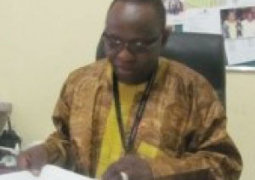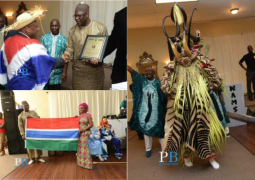1. The Christmas message has been told in
many ways. The most popular of them has been given to us by St. Luke. It’s the
Gospel story we hear each year at the midnight mass. Luke begins by giving us
two details about Jesus’ birth: He was born when the Roman Emperor, Caesar
Augustus, ruled the world; and, He was born in a stable on a hillside outside
the town of Bethlehem, because there was no room for Mary and Joseph in the
town.
Luke
therefore tells us the time and the place where Jesus was born. He did this
because he wanted to let us know that the coming of the Son of God on earth was
firmly rooted in our world history. And it all happened in the silence of a
cold night. An Angel of the Lord appeared to some shepherds to tell them: ‘I
bring you news of great joy; today in the town of David (Bethlehem) a Saviour
has been born to you. He is Christ the Lord.’ With that, the shepherds went in
haste to Bethlehem. There they found Mary and Joseph and the child lying in a
manger. It was exactly as they had been told by the Angel. Then they went back
to their flocks glorifying and praising God for all they had heard and seen.
God chose a few shepherds to be responsible to make known the good news about
the birth of our Saviour. Wasn’t there something strange how God chose a few
poor shepherds to announce the birth of the long-awaited Saviour? How did Luke
come to know this story? Most probably he would have learnt it from Mary
herself.
2. St John gives us a very different
account about the Jesus of Nazareth whom he first met while fishing at the Lake
of Galilee. He doesn’t give us any details about when or where Jesus was born.
Years and years later, after Jesus had returned to his Father in Heaven, John
was sent into exile in a small island off the coast of Greece because he was
preaching the Risen Lord. There he had plenty of time to look back and think
about all his experiences during the three years of Jesus’ public life. Then
one day, he was inspired to put on record ‘something’ very special about this
child that was born in Bethlehem.
John
opened the message of his First Letter in this way: ‘Something we have heard
and seen with our eyes, which we have watched and touched with our hands, the
Word of Life. And that Life was made visible; we saw it and we are giving our
testimony…so that you too may be in union with us, as we are in union with the
Father and with his Son Jesus Christ’ (1 John, 1…).
3. These words are difficult for us to
‘understand’. John was trying to introduce the first Christians into one of the
greatest mysteries of our faith by using these words. We can never understand a
mystery. Remember - John was one of the twelve apostles; but he was more than
that. He was also one of the special three chosen by Jesus (Peter, James and
John) when he witnessed the transfiguration of Jesus on Mount Thabor. John was
also known as the ‘beloved disciple’. As such, he had a special closeness or
affection with Jesus among the twelve. And so, in the solitude of his
surroundings on the island where he lived, he must have pondered over and over
again his memories as a first hand witness to the life and the Mystery of this
man Jesus of Nazareth. In other words, the child born on that first Christmas
night was both the Son of God and the Son of Mary. ‘The Word was made flesh and
dwelt among us’. God became man; he took on our human weaknesses (flesh) while
still remaining a divine person.
4. St. Francis of Assisi was also inspired
to tell us about the Christmas story. And he did so without using any words at
all!! He decided to build or to create a very simple ‘crib’ – something that
would be similar to the cave and the manger in which Jesus was born. Francis
often taught his companions: ‘preach the Good News at all times and, if
necessary, only use words’! In other words, example is more powerful than
preaching.
And
so, he assembled the first crib on Christmas night in the year 1223, in a cave
on the side of a mountain in Italy. A large crowd of local people came to take
part in the ceremony with the first crib. Its only occupants were an image of
the Christ child lying in a manger of straw and two live animals (an ox and a
donkey).
The
purpose of the crib was to help the people to imagine the scene of Jesus’ birth
on that first Christmas. And his idea (or experiment) touched the hearts and
minds of the farmers and shepherds who lived in the nearby village of Greccio.
One
of St. Francis’ companions wrote a very brief account of his experiences of
that night: Simplicity was honoured; Poverty was exalted; Humility was
praised’.
The
mystery of the Incarnation became something tangible from that first Christmas
crib in a very poor rural region of Italy.
5. The making of a crib in our Churches
and homes at Christmas has spread all over the world following the example of
St. Francis. Christmas has always been a time of joy. We sing the carols with
great joy: Joy to the World; Hark the Herald Angels sing; Once in Royal David’s
city. Heaven is joined to earth; and earth to Heaven. The son of Mary, a
helpless child, is also the Son of God. However, we must also ‘taste’ the real
joy in our hearts as we look at that tiny figure of the Christ child and gaze
in wonder at the mystery that confronts us: ‘Simplicity has been honoured;
Poverty has been exalted; Humility has been praised’. That is why we cry out
with the Angels: Glory to God in the highest and peace on earth among men of
goodwill.
Peace,
yes peace – so little around the world – and in our own country.
Yalla,
sunyu Borom, nyungi la gerem ngir sa dom Yesu Krista, ki di fengyal sa har
kanam chi nyun.
You,
Yalla Borom yermande, mi nyu wotu sasu nyu sone te new dole. Sunyu reyrey, nga ut nyu be gis nyu, te fehal
sunyu hol.
Nanyu
Yesu Bur I jama ji dimali, ndah nyu sahal jama chi sunyu bir hol, chi bir sunyu
njobot, chi sunyu reu ak chi bir aduna si sepa.
AMEN.
Read Other Articles In Article (Archive)
Taiwan president's special envoy to arrive today
Jul 20, 2010, 12:50 PM
Hunger Free Campaign Caravan Reaches more Regions
Oct 21, 2008, 6:09 AM



